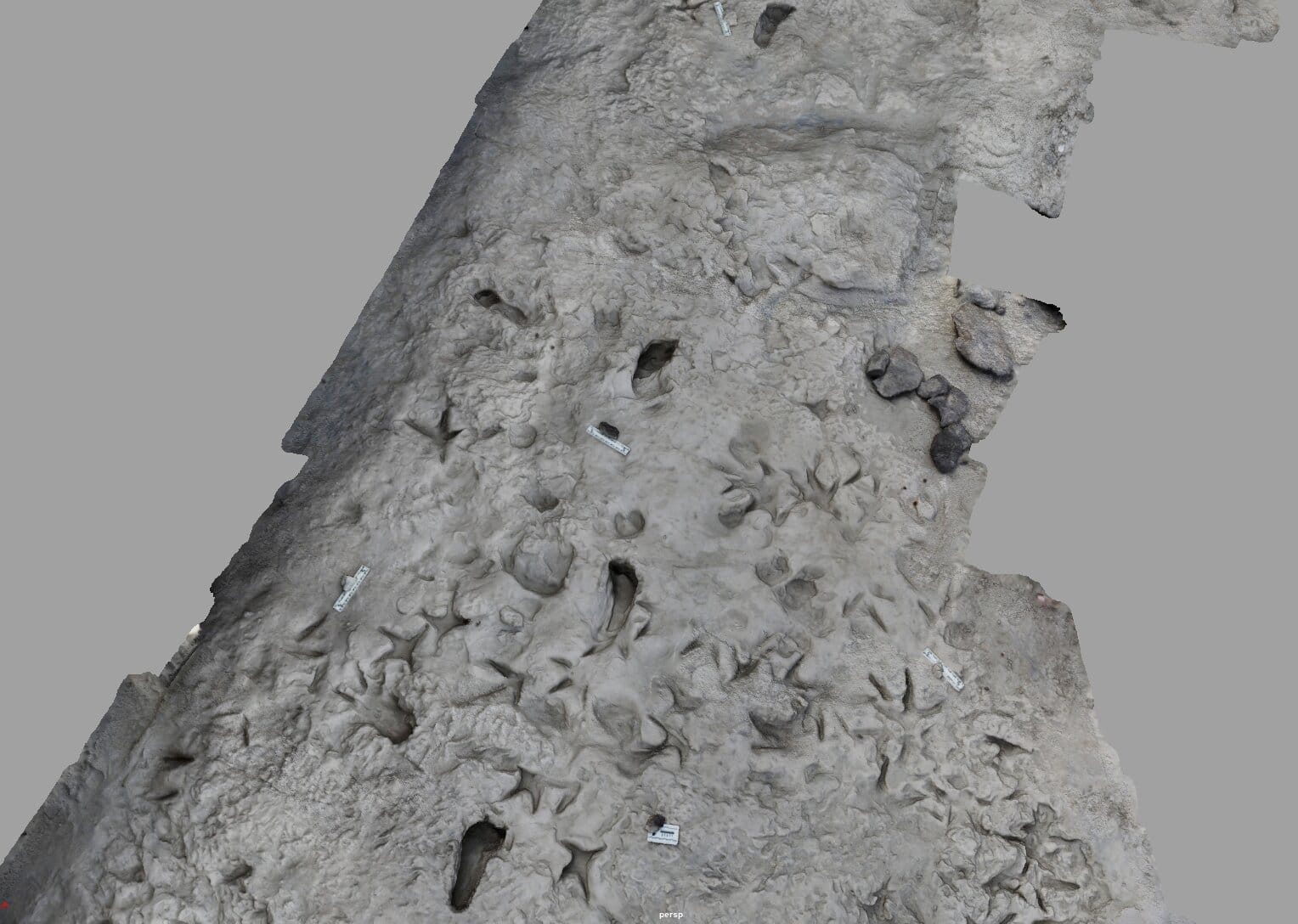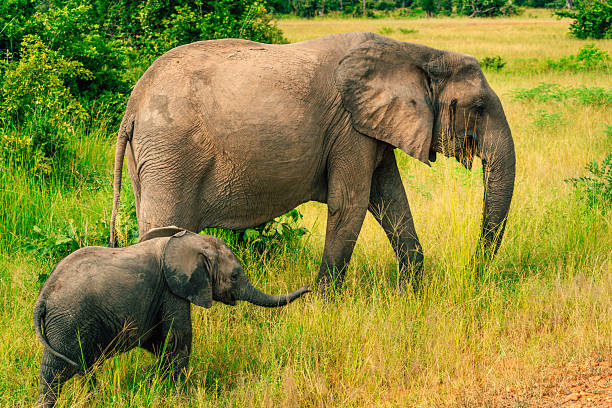More than a million years ago, on the sun-scorched savannas of what is now northern Kenya, two species of early humans may have crossed paths along the edge of an ancient lake. These hominins, primitive members of the human lineage, might have been scavenging for food, evading predators, or simply navigating their shared habitat. Their presence left behind an extraordinary trace of their lives—footprints preserved in soft lakebed sediments, discovered over a million years later by a team of researchers.
The 1.5-million-year-old footprints, unearthed near the present-day Lake Turkana, offer compelling evidence of the coexistence of two distinct hominin species, Homo erectus and Paranthropus boisei. These fossilized tracks are the first definitive example of two hominin species leaving their mark on the same landscape at approximately the same time. This remarkable discovery provides valuable insight into the complex interplay of competition, cooperation, and coexistence that shaped human evolution.
Hominins are a subgroup of the broader hominid family, encompassing all species that are more closely related to humans than to great apes. This lineage, which diverged from the ancestors of chimpanzees and gorillas about six to seven million years ago, includes extinct species and modern humans. The fossilized footprints represent a vivid snapshot of life during the Pleistocene Epoch, a period characterized by dramatic climatic shifts, evolutionary milestones, and the emergence of some of our most iconic ancestors.
The groundbreaking study, published in Science, highlights the significance of trace fossils—evidence of behavior such as footprints, nests, and burrows. Unlike body fossils like bones and teeth, trace fossils are immovable, offering direct evidence of an organism’s interaction with its environment. In this case, the footprints confirm that Homo erectus and Paranthropus boisei occupied the same habitat and may have encountered one another.
Homo erectus, often referred to as one of humanity’s direct ancestors, was a highly adaptable species known for its larger brain, use of tools, and mastery of fire. Paranthropus boisei, on the other hand, was a robust hominin with powerful jaws adapted for chewing tough plant material. While these species shared bipedalism and upright posture, their anatomical differences reflect divergent evolutionary paths.
The fossilized footprints were discovered by a field team led by Louise Leakey, a third-generation paleontologist from the famous Leakey family, renowned for their contributions to human evolutionary research. The excavation was conducted in 2022 near a rich fossil site in Kenya, with the team uncovering the footprints after spotting fossilized bird tracks. The tracks were found preserved in fine-grained sediments that allowed for exceptional detail, enabling researchers to conduct advanced 3D analyses.
Kevin Hatala, the study’s lead author and an expert in foot anatomy, noted that these footprints provide a unique glimpse into the daily lives of ancient hominins. Unlike bones or tools, footprints capture moments in time—evidence of movement, behavior, and even interaction. The tracks revealed subtle differences in locomotion and anatomy between the two species, shedding light on how they navigated their environment.
Using cutting-edge 3D imaging techniques, researchers distinguished the footprints of Homo erectus from those of Paranthropus boisei. These advanced methods allowed scientists to analyze the prints’ depth, shape, and spacing, offering new ways to interpret behavior from the fossil record. Rebecca Ferrell, a program director at the National Science Foundation, emphasized the importance of such technologies in advancing our understanding of human evolution.
The coexistence of Homo erectus and Paranthropus boisei raises intriguing questions about their interactions. Did these species compete for resources? Did they coexist peacefully, or were there moments of conflict? While the fossil record provides clues, much remains unknown. For instance, scientists are uncertain about whether these species interbred or whether cultural exchanges occurred. Despite their coexistence, the evolutionary trajectories of these species diverged significantly—Homo erectus persisted for nearly a million more years, while Paranthropus boisei eventually went extinct.
The footprints also provide context for the broader challenges faced by hominins during the Pleistocene. This epoch was a time of environmental change, with fluctuating climates that tested the adaptability of species. Lake Turkana and its surrounding regions were hubs of biodiversity, teeming with predators and competitors. The ability to navigate these landscapes successfully was critical for survival, and the footprints offer a testament to the resilience of early humans.
Craig Feibel, a geologist and co-author of the study, used stratigraphic analysis to date the footprints to 1.5 million years ago. His expertise in sedimentology allowed him to determine that the tracks were made within a short timeframe, likely just hours apart. Feibel described the discovery as serendipitous, highlighting the role of trained local excavators who first identified the tracks after heavy rains exposed the sediment layers.
The implications of this discovery extend beyond understanding ancient behavior. It underscores the value of interdisciplinary research, combining geology, anthropology, and advanced imaging technologies to unlock the secrets of the past. These findings enrich our understanding of how early humans adapted to their environments, interacted with other species, and ultimately shaped the evolutionary path that led to modern Homo sapiens.
As researchers continue to analyze the footprints, they hope to uncover more details about the interactions and movements of these ancient species. Each new discovery adds a piece to the puzzle of human evolution, offering a deeper appreciation for the complexity and diversity of our ancestry.
The fossilized footprints near Lake Turkana serve as a powerful reminder of the shared origins and intertwined fates of early humans. They offer a rare glimpse into a moment frozen in time—a moment when two distinct species walked the same ground, their lives and legacies etched into the earth. Such discoveries not only illuminate the past but also inspire ongoing exploration into the story of what it means to be human.
References: Kevin G. Hatala, Footprint evidence for locomotor diversity and shared habitats among early Pleistocene hominins, Science (2024). DOI: 10.1126/science.ado5275. www.science.org/doi/10.1126/science.ado5275
William E. H. Harcourt-Smith, Contemporary hominin locomotor diversity, Science (2024). DOI: 10.1126/science.adt8033 , doi.org/10.1126/science.adt8033






